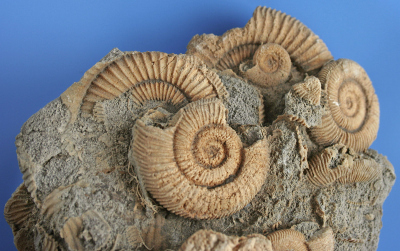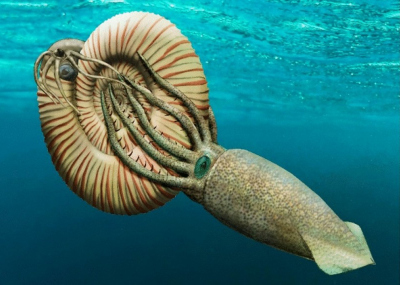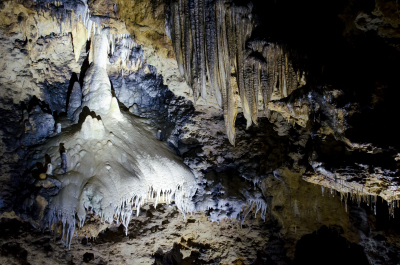- Home
- Deutschland Tour 2021
- Stage 4. Erlangen – Nürnberg
Stage 4. Erlangen – Nürnberg
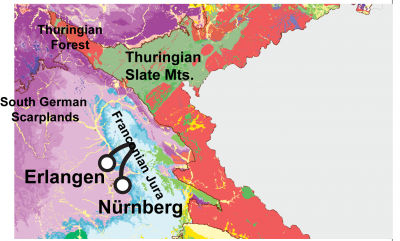
On Sunday, the riders will spend most of their day in Franconian Switzerland. Don’t worry, we’re not crossing any national borders. The term Switzerland is often given to German places or areas that are a bit hillier than the surrounding region. Franconian Switzerland is the northern part of the Franconian Jura. In Germany, Jurassic rocks are subdivided into three groups: The oldest group is the black Jura or Lias, the second group is the brown Jura or Dogger, and the youngest group is the white Jura or Malm. The riders will encounter all three groups during the stage and thereby, they will go through a 70-million-year long history of sea level change, between 205 and 135 million years ago. This Jurassic sequence of sedimentary rock is quite peculiar because it represents an exceptionally long-lasting period during which Central Europe was inundated by a sea without interruption. Here, in the Franconian Jura, this layer cake of rocks is up to 600 meters thick.
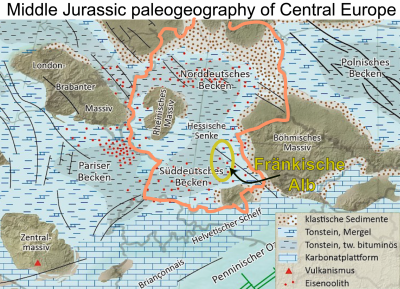
The large-scale tectonic setting that allowed for all this was the break-up of Pangea (video related to Wright et al., 2020, Earth Science Reviews). The dawn of the Jurassic marked the end of the supercontinent as North America started drifting away and the Central Atlantic Ocean came into existence. The progressive tectonic break-up in combination with sea level rise allowed seawater to penetrate as far as Central Europe, as the riders already experienced yesterday on the Rathsberg. At the beginning of the Jurassic, a shallow sea existed in Central Europe with a whole series of islands that rose above sea level (e.g. the Bohemian Massiv and the Rhenish Massif). A tropical climate prevailed with lush vegetation and deeply-weathered soils. In the black and brown Jura groups, we mostly find thick and dark-coloured clay-rich layers that are made up from the detritus of these soils. In the white Jura group, however, there was a general shift towards carbonate-rich sediments, like marls, limestones and dolomites. Somewhat ironically, the riders will be climbing from about 300 m above sea level in Erlangen, to about 550 m above sea level in Franconian Switzerland, thereby swapping the Keuper layers that were mostly deposited above or at sea level, for Jurassic sediments that were deposited a few dozen meters below the sea surface. The accumulation of different sedimentary layers and subsequent tectonic uplift have thus completely turned upside down the topographic relationships between these two sedimentary units.
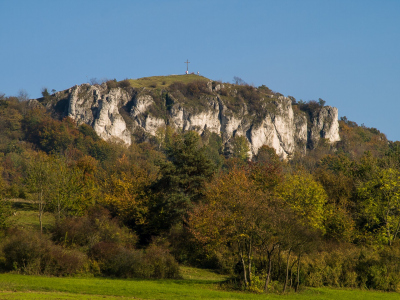
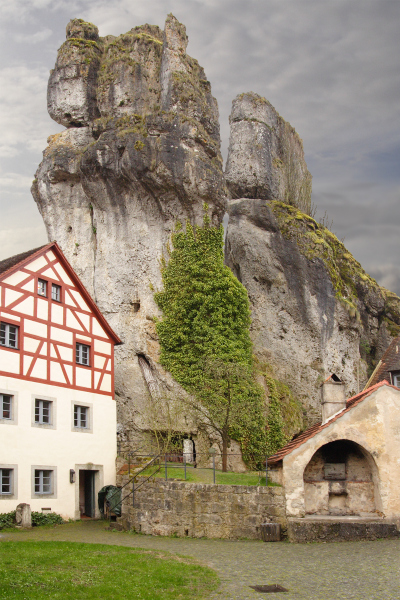
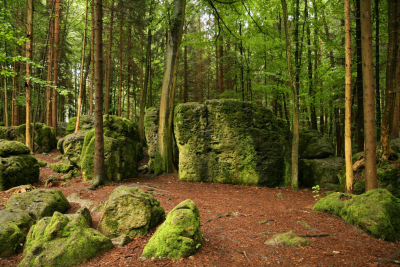
At the end of the Jurassic, sea level dropped and large parts of southern Germany became continental. Thereby, the carbonate rocks of the white Jura were exposed to karstification. This means that the limestone and dolomite rocks are dissolved by slightly acidic rain- and riverine water. The dissolved material is carried away by the water and leave behind a landscape characterized by sinkholes and caves. Franconian Switzerland is full of karstic features that are worth a visit, like the Riesenburg, the Druidenhain, the Pottenstein, the Zeckenstein cliff and the Sophienhöhle. The process of karstification that scoured the Late Jurassic rocks in such a spectacular way started in the Cretaceous, but continues today and will continue as long as the carbonate-rich rocks are exposed to corrosive rain and riverine waters. By the way, it is because of this karstification that today’s stage has such an interesting elevation profile, up and down through the mostly dry valleys of Franconian Switzerland until the riders have about 2000 altimeters on the counter. Then, they descend into the Pegnitz and Regnitz valleys, where they find back the good-old Keuper layers on which Nürnberg was built. My guess is that Maximilian Schachmann will be today’s winner.
